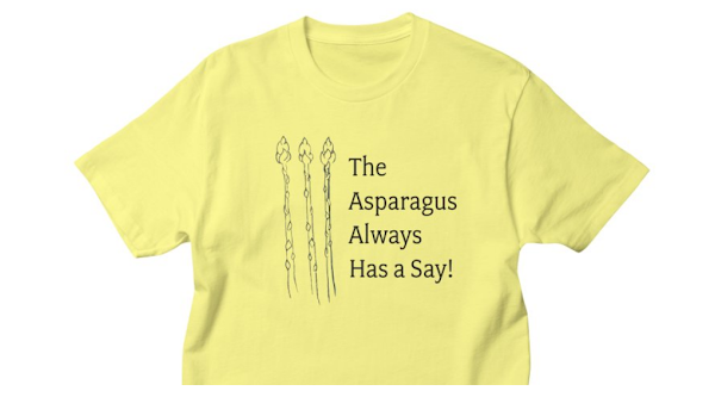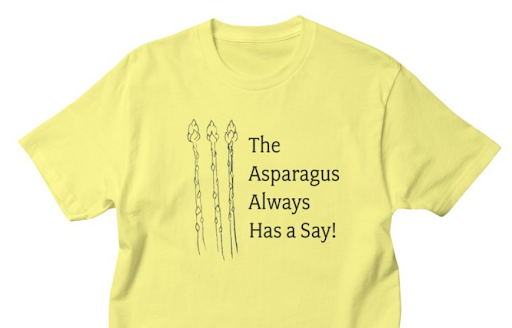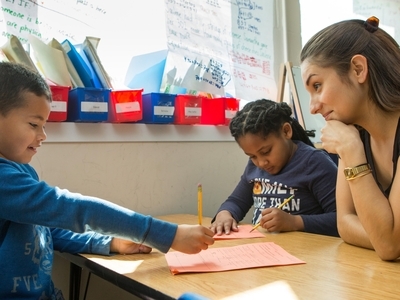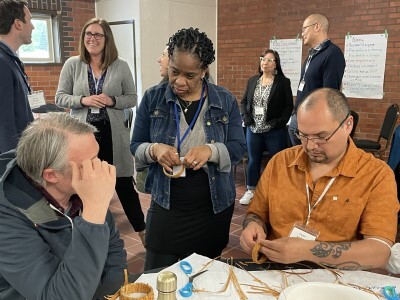My Asparagus Has Questions for Your North Star
Topics

Next generation learning is all about everyone in the system—from students through teachers to policymakers—taking charge of their own learning, development, and work. That doesn’t happen by forcing change through mandates and compliance. It happens by creating the environment and the equity of opportunity for everyone in the system to do their best possible work.
How to Use Metaphors Badly in the CBE Rebellion
One of the strengths and joys of being a part of the CBE rebellion is witnessing the language of our work unfold in new ways. It’s never enough to explain competency-based education. It’s never enough to be right. Our words need to teach and inspire. We need to advocate, provoke, and overturn assumptions about learning. You can’t do that with just prose, you need poetry and music. You need good metaphors.
A metaphor is a word for a thing that it is not. For example, if you say, “That kid is a powerhouse!” you are saying something other than that kid is a literal powerstation. You are communicating something more than factual about that kid. If you say, “This city is a powderkeg, ready to blow!” you are not saying the city is made of gunpowder, but something else, something evocative. When Raymond Chandler wrote, “He had a face like a collapsed lung,” he was telling you the guy's face was not a collapsed lung but shared salient traits with a collapsed lung.
The trouble with really good metaphors, the ones that get under your skin and get you up out of your seats, is that if they are recognized as good then they are adopted by everyone, and they lose power via familiarity. If they are very popular, they get adopted by the Status Quo system. They are denuded of all color and meaning. They become space fillers that provide cover for the act of doing nothing. They become jargon.
What’s that? Do I have examples?
Two years ago I was part of a work group looking at building equity in education communities like NGLC and our co-conspirators (i.e., Why are so many ed conferences dominated by 30 to 60 year old White guys like me?). The question we started with was, “How do we bring a diversity of folks to the table?” The question bothered me, but I couldn’t put my finger on why.
At the next meeting, someone asked, “Why does it have to be a table?” Yeah! That’s what I was trying to get at! This person continued, “Why does it have to be a finite manmade structure, with a limited number of seats?” Someone said, “We could use benches, instead of seats,” and eye-rolling occurred. Eventually, I said, “What if … instead of a table with seats, where everyone who comes to the table reduces the space available for everyone else, we had a circle around a fire that could expand to whatever size? We’d all be standing around the fire, drawing benefit from the heat and the light.”
My campfire circle idea was not embraced, but the idea of leadership as a scarce resource, like seats around the table, was set aside.
(I still like the campfire metaphor. Especially as an introvert who experiences direct eye contact as a dominance move and not the patriarchy’s “sign of respect.” Having a conversation with someone while we both look at a campfire sounds really nice to me.)
Metaphors are powerful things. Sometimes they unlock understanding for us. One metaphor of mine that has NOT taken off comes from me trying to talk about the fact that we can’t make kids learn. We can only create conditions that increase the probability of learning.
I made the analogy to a farmer. Farmers create conditions for growth. They can’t make things grow. If they’re growing asparagus, they can’t point their finger and yell, “Grow harder!” They can cheat. Add fertilizer. Put up fencing. Add a grow light. But they can’t coerce the asparagus into growing. They can’t threaten punishment if measurement shows inadequate growth. They can’t make the asparagus grow. The asparagus always has a say in whether it grows or not. Similarly, it doesn’t matter what we do. Kids always have a say whether they learn or not.
After that, among my circle of colleagues, whenever someone talked about making kids do a thing, we would remind ourselves, “The asparagus always has a say.” Still, it remains obscure, even though I put it on a tee shirt.

Courtesy of the author
Nevertheless, just the other day I had a conversation with a teacher from the Designing for Deeper Learning course I teach. We talked for an hour, chewing over the ideas behind deeper learning, performance assessment, and CBE. We talked about how teachers can only create conditions. Later that day I received an email, “Thanks for the talk, especially the asparagus thing!”
(And if you’re going to object that I’ve just compared our kids to vegetables, I can only point out that the metaphor is built into the word, “kindergarten.” I make no apologies.)
The final misused metaphor I need to bring up is the one that started me down this line of inquiry. The number of people talking about “our North Star” or “our True North” has started getting to me. Probably it’s because repetition makes something reasonable into something trite. But it’s also because the phrase is showing up in all sorts of heinous places, like corporate manifestos, political ads, or status quo mission statements. In the materials for one organization I was looking at, they actually talked about “Our two North Stars.”
Call me pedantic, but that’s not how North Stars work.
Here’s the thing about the North Star. It’s not your target. It’s not your goal, or your aim, or the thing you are steering toward. It’s a fixed point in the sky by which you can steer in any direction. The reason the status quo everything-is-fine crowd can so easily co-opt the North Star metaphor is because you can just as easily use the North Star to head south.
Here’s another thing about the North Star. If you are in the Southern Hemisphere (let’s say Tahiti, just for fun) you can’t see the North Star. How will you steer, then, if you are relying on that one point? If you only know the North Star you cannot. Polynesian voyaging canoes steered not only by understanding the North Star, but by understanding the relationships of all the stars in the sky to the North Star, and also by the relationships of all the stars to one another. It was the relationships that brought them to their homes in the islands.
In the dominant western culture, we like having that one big idea. The driving thought. The North Star. Even when we say we value flexibility, decentralization, child-centered learning, multi-variance, and relationships, we still fixate on the one point in the sky. Subtlety and nuance are a bother. We fetishize the North Star. No wonder we have trouble navigating the political, structural, personal, and symbolic waters to new homes in education—where CBE and next generation learning are the way of things.




